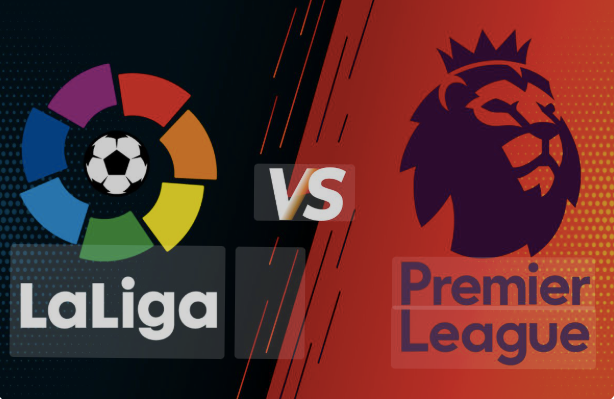Analysis: Why Manchester City Dominate Possession in Every Game
In present-day football, we see few clubs employ the tactics of possession-based dominance like Manchester City. Under the guidance of Pep Guardiola, the English giants have now defined how the ball is controlled, moved, and used as a defensive and attacking weapon.
From their record-breaking Premier League campaigns to their historic treble in 2023, Manchester City’s command of possession has become both an identity and a strategic cornerstone.

In this article, we research and give a detailed analysis of why Manchester City dominates possession, breaking down the key tactical concepts, structural advantages, and individual player contributions that make City a global benchmark in ball control.
This in-depth analysis also reveals Pep Guardiola’s methods, player roles, formations, and philosophy that keep City in control of the ball and the game.
A
Pep Guardiola’s Philosophy:The DNA of Possession
Pep Guardiola’s tactical philosophy which he gradually developed from clubs like Bayern Munich and Barcelona has been completely developed in the heart of the Manchester City team as they are known for dominance and possession across Europe. His great belief in the system is greatly by his idea that “ if we have the ball, they can’t score”
Pep Guardiola’s style of possession isn’t just about keeping the ball, but it’s also about using it to frustrate and suffocate the opponents, dictate the tempo of the game and force them to make costly mistakes.
The goal is to create high-quality chances through positional superiority, overloads, and numerical control in every phase of the game.
Key Principles of Guardiola’s Possession Philosophy:
Positional Play (Juego de Posición): Dividing the pitch into zones and ensuring optimal occupation for ball circulation and space creation.
Ball Circulation with Purpose: Every pass is designed to move the opposition, not just retain the ball.
Five-Lane Attacking System: Occupying all vertical channels across the width of the pitch to stretch opponents.
Control as a Form of Defense: Dominating the ball limits opposition threat and keeps City defensively solid.
Tactical Shape: Flexibility in Structure
The shape of the Manchester City team changes and improves time after time, but the foundation of their dominance in possession lies in their tactical structure during build-up and transitions.
Typical Build-Up Shape: 3-2-5
In possession, City often switches into a 3-2-5 formation, especially when facing teams with low blocks. Here’s how it works:
Back Three: Usually formed by the two center-backs and a full-back (like John Stones or Kyle Walker) stepping into midfield.
Double Pivot: Players like Rodri and a converted defender (e.g., Stones) sit in front of the back line to recycle possession and resist the press.
Front Five: full-back can join the front line both with the attacking midfielders and wingers working together followed by (De Bruyne, Phillip Foden, Grealish) this can form a five-lane defensive attack.
This Structure Provides:
- Vertical and horizontal balance
- Overloads in wide and half-spaces
- Options between the lines
It’s flexible enough to shift into a 2-3-5 or even a 4-1-5 when City are pinning teams back, showcasing their fluid tactical identity.
Player Profiles and Technical Excellence
Guardiola’s system thrives on technically gifted, press-resistant players who can perform under pressure and execute quick, short passing. Every player is selected and trained for their unique skill set in keeping the ball and progressing play.
Rodri – The Metronome
Rodri is arguably the most important piece in the City’s possession puzzle. His ability to:
- Read the game
- Play out of pressure
- Switch play
- Break lines
This makes him essential in recycling possession and resisting the opposition press. He serves as the pivot around which City’s passing triangles revolve.
Kevin De Bruyne – The Space Exploiter
Though not traditionally a “possession” player, De Bruyne thrives in Guardiola’s system by finding space in high zones and delivering decisive passes. His ability to time runs and link with the front five ensures possession leads to the end product.
Use of Centre-backs and Full-backs:
The centre-backs and fullbacks which are the likes of John Stones, Manuel Akanji, and Joško Gvardiol often step into midfield to create a level of superiority and maintain composure on the ball. Their hybrid roles are crucial in maintaining possession under pressure.
Wingers with Control
Unlike pure pacey dribblers, City’s wingers like Jack Grealish and Phil Foden value ball retention over risky take-on. Their disciplined movement and ball control help stretch opposition lines while retaining the ball.
Mastering the Press-Resist and Build-Up
Opponents often attempt to disrupt the City by pressing high. However, City consistently play through pressure due to:
- Proximity of players for quick combinations
- Constant scanning and body orientation
- Third-man runs and wall passes
This system allows City to beat the first wave of pressure and exploit the space left behind. Guardiola emphasizes press-resistant sequences, where midfielders receive under pressure, turn, and progress the ball vertically.
Example Pattern:
Ederson to Stones
Stones to Rodri (pressed)
Rodri bounces it back to Stones
Stones find Gündoğan or De Bruyne between the lines
This sequence allows City to pull opponents out of shape while gradually advancing the ball in complete control.
Overloading and Isolating: Controlling the Wings
One of City’s signature possession tactics is to overload one side of the pitch to pull defenders in and then switch quickly to an isolated winger.
This asymmetrical attack keeps opponents guessing and opens up dangerous attacking situations without sacrificing possession.
6. Rotational Movement and Triangles
City players rarely stay static. Constant movement creates:
- Passing triangles
- Dynamic overloads
- Confusion in defensive lines
Guardiola trains his squad to rotate positions during build-up and attacking phases without disrupting shape. For example:
- Bernardo Silva drops deep to collect
- Rodri pushes slightly forward
- Stones rotates into midfield
These rotations ensure fresh passing angles, enabling City to circulate the ball until an opening emerges. This makes them one of the hardest teams to press in Europe.
Ederson’s Role in Ball Progression
City’s possession game doesn’t begin in midfield it starts with Ederson, their goalkeeper. His:
- Pinpoint long-range passing
- Calmness under pressure
- Quick distribution
This turns him into a playmaker in build-up phases. He can:
- Bypass pressing lines with accurate long balls
- Maintain possession even when pressed
- Initiate attacks directly from the back
Ederson’s involvement adds a numerical advantage against high-pressing teams.
Mentality and Discipline: Possession with Purpose
Possession without purpose is sterile but Guardiola ensures that City’s possession is always with intent.
- Retain to create space
- Recycle to destabilize shape
- Dominate to frustrate opponents
City’s players are drilled to remain disciplined even when ahead. Unlike many teams who sit back after scoring, City doubles down on possession, suffocating teams with control rather than parking the bus.
This mental focus and structure reduces the chances of conceding late goals or being hit on the counter.
Pressing After Loss – “5-Second Rule”
Possession isn’t only about offense. Guardiola insists on an immediate press after losing the ball known as the 5-second rule. City aims to win back the ball within five seconds of losing it, preventing transitions.
This:
- Keeps them in control
- Maintains territorial dominance
- Frustrates opposition counters
Rodri, Bernardo Silva, and Gündoğan (previously) are experts at closing gaps quickly and forcing errant passes or recoveries.
Data Insight: Possession Stats Under Guardiola
Let’s look at some numbers from recent seasons that showcase City’s dominance:
| Season | Average possession % | Pass Accuracy | Passes per match |
| 2022/2023 | 64.5% | 89% | 685 |
| 2023/2024 | 65.2% | 91% | 702 |
| 2024/2025 so far | 66.1% | 90.5% | 715 |
They also lead the Premier League in:
- Progressive Passes
- Touches in Opponent’s Half
- Passes Completed in Final Third
These numbers validate the theory: City don’t just hold the ball,they dominate games with it.
Conclusion: A System Built for Control
The domination of Manchester City’s team is no coincidence. Is a result obtained through technical superiority, tactical detail and the philosophy of commitment to control.
Pep Guardiola has created an advanced possession system where every player understands their role in maintaining tempo, space, and shape.
From inverted full-backs and fluid formations to vertical passing lanes and rest defense, every element is meticulously designed to control the ball and the opponent.
As the game continues to evolve, Manchester City stands as the gold standard of possession football, showing that when executed correctly, control is not just about safety, it’s about domination.










Post Comment